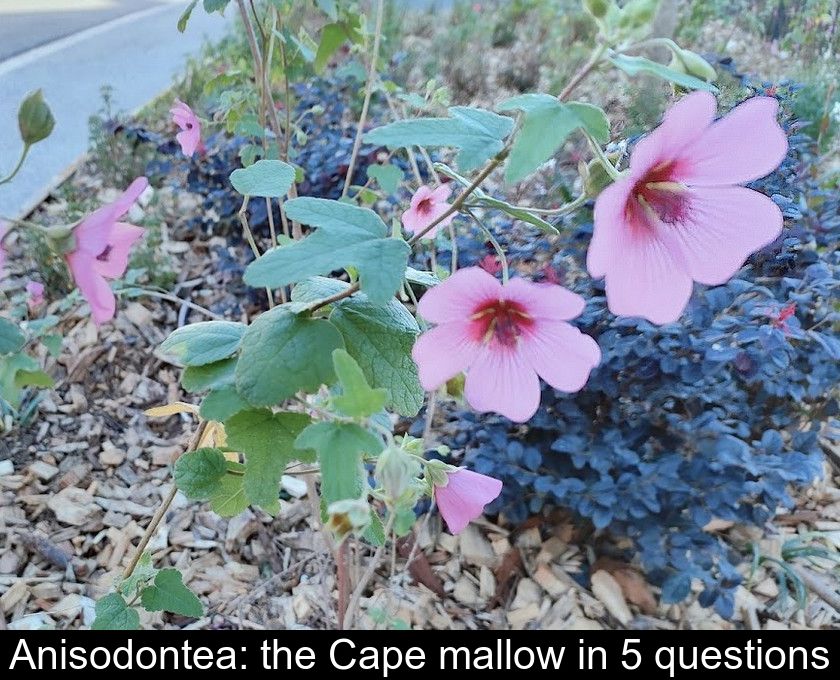Anisodontea: The Cape Mallow In 5 Questions
Herbaceous perennial plant native to South Africa, the Cape mallow adapts well to challenging growing conditions such as light soil and a dry climate. This shrubby mallow, ideal for Mediterranean and coastal gardens, will delight you with its abundant and colorful blooms. Here is everything you need to know about its cultivation in 5 questions.
1- How to recognize the Cape mallow?
The Cape mallow or Anisodontea capensis is a small flowering shrub from the hibiscus family. Its large cup-shaped five-petaled flowers resemble those of hibiscus or marshmallow...
They are pink with purple veins and feature prominent stamens. The blooming occurs in successive waves from April to November and can even last all year under mild climates.
2- When to plant Cape mallow?
It is recommended to plant the Cape mallow in the spring or autumn, avoiding periods of frost and excessive drought. Indeed, this shrubby mallow from South Africa has limited hardiness to -5°C.
Once well established, it is drought-resistant when grown in open ground. However, after planting, it is important to water it regularly to promote its growth and flowering.
3- Where to plant the Cape mallow?
The Cape mallow is a herbaceous perennial that enjoys a location in full sun and sheltered from the wind. Anisodontea capensis thrives in light and well-drained soils, including soils rich in limestone.
At the time of planting, it is advisable to enrich the garden soil with leaf mold or mature compost and, if necessary, add gravel at the bottom of the planting hole to ensure good drainage.
You can also grow this shrub with flexible stems in a container, providing it with a substrate composed equally of garden soil, universal potting soil, and sand.
4- How to prune the Cape mallow?
The Cape mallow is a low-maintenance flowering plant. Care is limited to regular but not excessive watering, especially if you are growing it in a container.
In any case, you should allow the soil to dry out between waterings. For container cultivation, you should also apply flowering plant fertilizers during the peak blooming period, from May to September.
In winter, remember to reduce watering and protect your shrub mallow from the cold by mulching its base with dead leaves and covering it with winter protection fabric. In the coldest regions, it is recommended to overwinter it in a cool, bright place at around 15°C.
The most important maintenance task is to prune your Anisodontea. Pruning is done at the end of winter to encourage the growth of new flowering shoots in the following spring. In February, you can cut back the plant severely by reducing the branch lengths by about half.
5- Which variety of Anisodontea should you choose?
Under good growing conditions, the cape mallow offers an abundant, long-lasting, and highly decorative bloom. Its pink flowers, which contrast nicely with its dark green evergreen foliage, also have the advantage of being melliferous and attracting bees and other pollinators.
The choice of a variety is generally dictated by the flower color. Depending on the shade of pink or red you desire, you can opt for the following varieties:
• Miss Pink with pale pink flowers veined with darker pink.
• Large Magenta with bright pink flowers veined with purple.
• Large Red with an even deeper pink and a red center.
• Very Cranberry with red flowers.
The variety El Rayo is the most popular cultivar among gardeners for its uninterrupted flowering throughout the year and its pink flowers with a cherry heart.
If you are looking for a particularly hardy mallow, up to -10°C, you should consider Anisodontea scabrosa False Mallow with pale pink flowers. However, regardless of the variety chosen, this small flowering shrub will surprise you with the abundance and romantic charm of its bloom.












